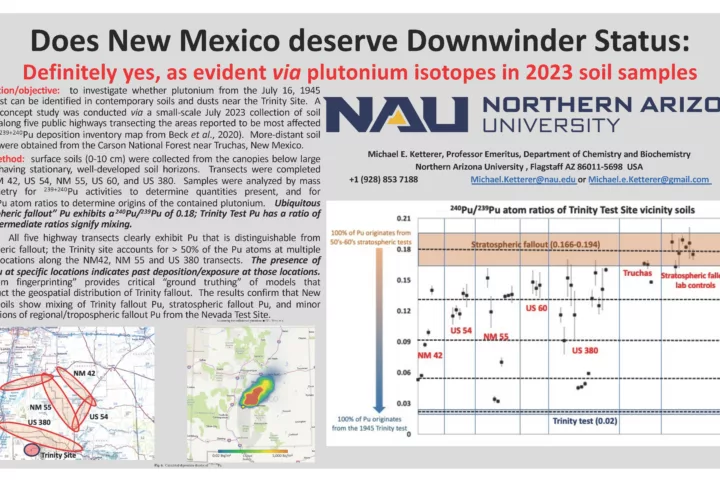Mine Games
In a March 9th press release, the Nuclear Waste Partnership (NWP), the management and operations contractor at the Waste Isolation Pilot Plant (WIPP) for the U.S. Department of Energy (DOE), stated their plans to reenter the ailing salt mine/nuclear waste repository after a radiological release shut down operations over three weeks ago.
The press release tells us that, on March 7 and 8, radiological and air quality instruments were lowered down the Salt Handling and the Air Intake Shafts. The preliminary findings indicated that no “detectable radioactive contamination” in the air or on the equipment. The press release claims that these results were expected because the shafts that were sampled were not in the air flow path coming from the area where the radiation release originated.
But, there are 4 shafts to underground – the Salt Handling, the Air Intake, the Waste Handling, and the Exhaust Shafts. After the detection on a radiologic release, filters move into the Exhaust Shaft and air is drawn to the outside by fans blowing to the outside here. The other three shafts, mainly the Air Intake Shaft because it has no elevator in it, provide intake for the air flow path to the Exhaust Shaft. Strangely missing from the press release is any mention of the Waste Handling Shaft, which contains an elevator to take the waste down into the mine and should also have been out of the air flow path. DOE and NWP must explain why the Waste Handling Shaft was not sampled and, if it was, what are the results. The Waste Handling Shaft provides the normal entry to the underground, so why use the Salt Shaft? Also, the press release did not mention that any “soil” samples were taken from the walls of any of the shafts. Is the Waste Handling Shaft contaminated or presumed contaminated?
As far as the air flow path goes, it’s an elaborate game to get the air to flow where it is needed in the underground of WIPP. Getting the desired path requires blocking off numerous openings in the underground. Bob Martin from KRQE gave a hint of what is involved in his recent report. We have not been given the diagram for the air flow path at the time of the release or even if the path was in place. We don’t have the location of all the monitors in the underground and if they were working. What was the presumed path of the contaminated air to the Exhaust Shaft? Why are so many details left out out of the information released to the public?
Unfortunately, the press release also mentioned that four more WIPP workers had been contaminated. But it was not stated where or when these employees received the dose. Was it Friday night or Saturday? Why was this important information not in the press release?
We also have some new sample findings released. Some of the interesting information here is that the WIPP Laboratory Analyses are so much lower than the Screening Analyses. I will get back to you on that. But don’t forget that it is unlikely that the main release actually hit any of the air monitors dead-on. Also, notice the lack of samplers to the northeast.
We will have to wait for soil samples to come in before we can begin to estimate the main path of the release.
WIPP is not a secret facility. (They even let me down there last year.) Press releases that raise more questions than they answer must stop now.

